In the retina of both eyes, there is one spot which is unable to process any optical stimuli. This is caused by what is known as the “blind spot”.
As it happens, it was the French naturalist Edme Mariotte who discover this phenomenon in 1660.
The blind spot in the eye is a completely normal part of our eyes and has nothing to do with any pathological eye disease, anopsia or a sight disorder. It is a “blind spot” because it does not have any photosensitive receptors.
The “blind spot” does not serve any purpose. It is a product of evolution and can be traced back to the embryonic phase.
What is the »blind spot«?
From the inside, every eye is lined with the retina which forms during the embryonic growth phase as a direct protrusion of the brain. This is also why the light sensing cells are also directed towards the inside of the head.
The retina consists of cones which are responsible for colour vision, as well as rods which control the light & dark vision. Retinal ganglion cells are particular nerve cells in the retina. The axons (extension of a nerve cell) of the retinal ganglion cells leave the eye bundled as the optic nerve and travel to the brain’s visual centre. They are therefore responsible for transmitting all optic stimuli to the brain.
All nerve fibres meet at the papilla nervi optici and are bundled together as an optic nerve. The task of the retina is to precisely replicate everything that we see as a coherent image and transform it into electrical signals (nerve/light signals). In the inner eye, these are then relayed from the ganglion cells via the papilla, where all optic nerves converge, to the brain for processing. To do this, the information penetrates the retina. These processes together are vital to allow us to see.
At the point where the optic nerve emerges to generate the crucial link to the brain there is no retina. This is why at this point, a portion of the overall image is not replicated and therefore not seen.
You could also say that we really are blind to this minimal part of the overall image in the moment we are looking at it and perceiving it. Why is that? Because this is where the blind spot is located, around 15 degrees towards the outer edge of the eye.
Why we still see coherent images
The position of the blind spot is different in each eye. This is why in the overall image the corresponding area from the other eye is detected and ultimately the gap is filled in the overall image.
Why we see complete images even when we close one eye
This is thanks to our intelligent and wily brain, which of course receives all stimuli for processing. From all the visual information at the edge of the blind spot it is able to recognise how the overall image should look in this area. Equipped with this “knowledge”, it fills in this area itself. In other words: we make up this small part of the overall image ourselves.
Because it is just a tiny part of the overall image, and the overall image is as a rule generated using both eyes, there is very little probability of us not perceiving an important part of our surroundings because it is in our blind spot.
How can I find my blind spot?
It is very easy to detect your blind spot.
- Using your hand, hold your left eye closed.
- Fix on the X in the graphic below using your right eye. The circle on the edge of your field of vision is still visible when it is located on the right-hand edge.
- The circle drifts from right to left towards the X and back again. In so doing, it briefly disappears. You have just discovered your blind spot!

Diseases affecting the blind spot
The position of the blind spot is different in each eye. This is why in the overall image the corresponding area from the other eye is detected and ultimately the gap is filled in the overall image.
-
Glaucoma
Glaucoma, also known as glaucoma, refers to many diseases that can damage the optic nerve not only permanently, but also irreparably. First affected are the nerve fibers in the optic disc (papilla nervi optici), the optic nerve head. The cause is found in a strongly increased intraocular pressure. On the one hand, this can damage the sensitive nerves and, on the other hand, impede their blood supply. Both lead to the nerves dying.
Because vision does not deteriorate until very late after damage has occurred, not only the retina but also the optic disc must be checked regularly. This is the only chance for glaucoma to be detected at an early stage and for a targeted therapy to be initiated in order to slow down its progression.
Glaucoma often progresses without symptoms and without pain. Only when the optic nerve is already damaged do the first impairments appear. And these are currently still irreparable.
Those affected therefore do not notice the progression because only the peripheral areas are affected at first. In addition, the healthier eye can compensate for the deficits to a certain extent.
-
Papillaoedema
The best known is congestive papilledema, which is also called papilledema. This is a swelling of the optic nerve head due to increased pressure in the brain.
The fact that the optic disc transmits information to the brain has already been documented here. However, this connecting pathway is also used in the opposite direction. Diseases can arise in the brain that affect the eyes, such as increased intracranial pressure leading to optic disc edema because water has accumulated in the tissues of the optic disc. As a result, the fine nerve pathways and blood vessels that pass through the exit site dilate. As a result, the optic disc becomes clearly protruding. Because an optic nerve leads from both eyes to the brain, excessive intracranial pressure almost always affects both eyes.
Other causes can be a tumor, a cyst or an abscess in the brain. A drainage disorder of the cerebrospinal fluid may also be the determining factor. These possibilities have to be clarified neurologically and possibly by CT or MRI, if the eye is organically healthy.


